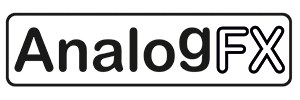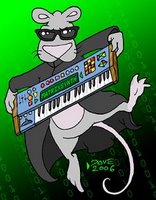Showing posts sorted by relevance for query The Sail. Sort by date Show all posts
Showing posts sorted by relevance for query The Sail. Sort by date Show all posts
Tuesday, June 24, 2025
Mood Machine | Sonicware Liven Evoke | New Set of 14 Songs
video upload by Sonic Cartography
"Track list and lots of notes below:
0:00 - 1. Dream Machine - With the Sonicware Liven Evoke, I’ve often been playing songs live, without using the sequencer, which I used for almost all of my songs with the Liven Ambient Ø (the two sequencers are very similar). With this song, I use the hold feature to hold some notes of textural sound in a couple of layers, while playing the piano layer live. The piano sound morphs between an acoustic and electronic sound a little bit after I play each note. Around the halfway point, with the chromatic pitch shifting, everything starts to turn into a granular storm (there are no granular effects prior to this), which is helped by the fact that you can cut the dry signal of each track and have a 100% wet mix of the reverb and/or granular sound. Oh, also, I want to give a thank you/shoutout to this video by @BenLevin because I started messing around with the chords that led to this song after watching it: • The secret to EMOTIONAL chords . His channel is one of my favorite music education channels on YouTube, so do check it out!
Tuesday, February 04, 2020
Cristal Baschet & Ethervox Theremin
Published on Feb 4, 2020 Peter Pringle
"There has been a lot of interest in the last few years in the instrument known as the “cristal baschet” (aka, “crystal organ” and “euphone”), so I decided to make a video showing what it looks and sounds like. The instrument was developed in the early 1950’s by the late Bernard and François Baschet, two brothers who lived and worked in Paris. It is entirely acoustic, and constructed mainly of glass and stainless steel. There are resonators attached to it to amplify the sound. In the above video the large “sail” (“voile” in French) is made of mirror polished stainless steel, while the three other teardrop-shaped resonators are made from arborite (these are usually made of fiberglass but I have found that arborite, which is much harder, gives a superior tone).
The sound of the “cristal” is produced by dipping your fingers in water, and rubbing them along a series of parallel glass rods. The rods are attached to a row of chromatically tuned steel bars, similar in principle to tuning forks, and the vibration set up by these bars is communicated to the resonators. This idea was first developed two hundred years ago by the German musician and physicist, Ernst Chladni.
Because the “cristal” must be played with wet hands, it is not easy to find a second instrument that you can play at the same time. The obvious choice is the THEREMIN, because it is played without touching. The theremin in the video is a 1998 Moog MIDI Ethervox, the only fully capable MIDI theremin ever made, and believed by many to be one of the late Robert Moog’s crowning achievements. Sadly, there were only about 50 of these instruments ever made.
Since I only had my left hand to play the theremin (my right hand is playing the “cristal”) I was forced to control the volume of the theremin by means of a pedal. It is interesting to note that with Russian inventor Leon Theremin’s early prototypes (which he called the “etherphone”) volume was also controlled by a pedal - not by a volume antenna. I would like to thank the original designer of the Ethervox MIDI software, Rudi Linhard of LINTRONICS, for certain improvements he made to foot control of the MIDI functions - my left foot is on a MIDI pedal which you cannot see in the video.
I built the cristal baschet in the video myself, with the kind help of the wonderful French musician and “cristaliste”, Karinn Helbert, who shared her knowledge of the instrument and was an endless source of encouragement. For those who are interested in the construction of this instrument, here is a webpage I put together describing the process. It was lots of fun to build (I really like making stuff) but I will not be making another.
This webpage is in French, but I hope to get around to doing a translation soon for English speakers who are interested in the subject.
www.peterpringle.com/cristalbaschet.html"
Monday, June 23, 2008
Amin Bhatia VIRTUALITY
VIRTUALITY Video: Part 1 The Moog Legacy
YouTube via interstellarcrew
"The first of many podcasts to come features the Bob Moog legacy and talks about how Amin Bhatia came to dedicate the album to him. Interviewed guests include Steve Porcaro, Patrick Moraz, Michelle Moog-Koussa as well as producers, engineers and musicians from 'Virtuality'
The podcast series was written and directed by Saul Pincus with contributions from cinematographers and journalists all over the world. Special thanks to the crew at Full Sail University, as well as the Bob Moog Foundation and the offices of Steve Porcaro, Patrick Moraz, Bhatia Music and Splice Heist.
Please visit aminbhatia.com for more on the album and artist."
Be sure to check out the Behind the Scenes section of the site.
VIRTUALITY Video: Part 2 The Making of Bolero Electronica
Uploaded on Dec 21, 2008
"The second of many podcasts to come features The Making of Bolero Electronica and talks about the inspiration for using 75 years of synthesizers; the origins of the instruments; and the challenge of putting it all together, including footage of rare keyboards used at the esteemed Cantos Foundation. Along with composer Amin Bhatia are Interviewed guests including Roland founder Ikutaro Kakehashi, Steve Porcaro, Patrick Moraz, Michelle Moog-Koussa as well as producers, engineers and musicians from 'Virtuality.'"
VIRTUALITY Video: Part 3 Inside the Computer
Uploaded on May 20, 2009
"The third installment of the Virtuality podcasts explores the possibility of making videos using the album as underscore. With the help of Music Academy Online and Second Life we are shown one interpretation of the virtual world - one where people can travel into the album. Interviewed guests include Patrick Moraz, Steve Porcaro, Ari Posner, Michelle Moog-Koussa, and (SL) Benton Wunderlich as well as producers, engineers and musicians from 'Virtuality.' The podcast series was directed and edited by Saul Pincus and Mark Dwyer with contributions from cinematographers and journalists all over the world. Special thanks to the crew at Full Sail University, as well as the Bob Moog Foundation and the offices of Steve Porcaro, Patrick Moraz, Bhatia Music, Splice Heist and Second Life. Please visit aminbhatia.com for more on the album and artist."
YouTube via interstellarcrew
"The first of many podcasts to come features the Bob Moog legacy and talks about how Amin Bhatia came to dedicate the album to him. Interviewed guests include Steve Porcaro, Patrick Moraz, Michelle Moog-Koussa as well as producers, engineers and musicians from 'Virtuality'
The podcast series was written and directed by Saul Pincus with contributions from cinematographers and journalists all over the world. Special thanks to the crew at Full Sail University, as well as the Bob Moog Foundation and the offices of Steve Porcaro, Patrick Moraz, Bhatia Music and Splice Heist.
Please visit aminbhatia.com for more on the album and artist."
Be sure to check out the Behind the Scenes section of the site.
VIRTUALITY Video: Part 2 The Making of Bolero Electronica
Uploaded on Dec 21, 2008
"The second of many podcasts to come features The Making of Bolero Electronica and talks about the inspiration for using 75 years of synthesizers; the origins of the instruments; and the challenge of putting it all together, including footage of rare keyboards used at the esteemed Cantos Foundation. Along with composer Amin Bhatia are Interviewed guests including Roland founder Ikutaro Kakehashi, Steve Porcaro, Patrick Moraz, Michelle Moog-Koussa as well as producers, engineers and musicians from 'Virtuality.'"
VIRTUALITY Video: Part 3 Inside the Computer
Uploaded on May 20, 2009
"The third installment of the Virtuality podcasts explores the possibility of making videos using the album as underscore. With the help of Music Academy Online and Second Life we are shown one interpretation of the virtual world - one where people can travel into the album. Interviewed guests include Patrick Moraz, Steve Porcaro, Ari Posner, Michelle Moog-Koussa, and (SL) Benton Wunderlich as well as producers, engineers and musicians from 'Virtuality.' The podcast series was directed and edited by Saul Pincus and Mark Dwyer with contributions from cinematographers and journalists all over the world. Special thanks to the crew at Full Sail University, as well as the Bob Moog Foundation and the offices of Steve Porcaro, Patrick Moraz, Bhatia Music, Splice Heist and Second Life. Please visit aminbhatia.com for more on the album and artist."
Monday, December 19, 2005
Elhardt on Synthesis
Elhardt. Some of you may recognize the name. For those of you that do, it might conjure up a number of reactions, some good some bad. : ) He has been the source of a number of controversies and one grand spectacle in the synth world - the Bahn Sage. The Bahn Sage was probably the biggest synth spoof ever. I remember spending weeks with others trying to find more on this mystery synth. A photo showed up on the net and it quickly spread, followed by more, and finally a brochure that had people whipping out their Photoshop skills to analyze in detail. In the end it was a fake; a brilliant hoax.
Now Elhardt has be showcasing his amazing programming skills by conjuring up some of the most realistic acoustic examples of real life instruments with an Alesis ION, Andromeda A6, and MOTM modular. Is it real or is it another hoax like the Sage? Who knows. I'm inclined to believe these samples are real given the attention to detail with the Bahn Sage, and replications of real world instruments by synthesists such as Wendy Carlos in the past, but you never know, do you. His samples are pretty awe inspiring (check out the links to some of my previous posts below for some examples, specifically the realistic drum set).
Another controversial perspective on synthesis from Elhardt? Knobs are not performance controllers. They are used to edit and create sounds. That's it. If you want to control sounds while playing, use the dedicated performance controllers on the synth like the mod wheels and keyboard. : ) I like to play outside of the box myself. Regardless I am impressed by Elhardt, and I do appreciate his dedication to synthesis.
Recently Elhardt sent an email to AH on his perspective on synthesis. I asked him if it would be ok for me to post it and he said yes. Enjoy. Or not. : )
Elhardt on Synthesis:
"Following are all the reasons I like to do realistic emulations of reality.
1) There is nothing interesting about playing samples. Everbody is doing that. Buy a $200 Casio and it does it. The skill of synthesis is completely missing. An artist paints a landscape, he doesn't just snap a photo of it. Sample libraries make everybody sound the same. If everybody synthesized their own acoustic sounds, everybody would have a different style.
2) Sample libraries are so insanely huge and can't even be fully used in real-time. I'd have to spend weeks sifting through 35 Gig of string samples and articulations and go through days of intense sequencer/midi programming to get them to play in a realistic manner. I'd have to use them from a computer with bug-ridden software. Major sample libraries are never complete, and constant updates suck money from you for the rest of your life. It's all going in the wrong direction.
3) I want instruments that play like physically modeled instruments. I just call up one patch and play it expressively in real-time. Simple. I also want to do instruments I can't buy samples of, or create brandnew instruments never heard before.
4) BTW, I have a lot of sample libraries, and some of the instruments suck, sometimes it's just a few notes that suck, sometimes the attacks are too slow and they can't be played fast, there are mistakes made (like clicking noises in garritans trombones, or a mono sample within stereo samples and so on), there's the repetative nature of hearing the sample recording played everytime the note is played, and so on.
5) Synthesis died in the 80's, before anybody ever pushed it to its limits. That is unsatisfying to me. When I first heard Tomita, I thought he was synthesizing virtually everything. Through the years, I found out he was using real instruments, mellotrons, and other acoustic methods in places. I want to do what he didn't. When I do a CD, I want to say I created all those sounds. As synthesists, aren't we supposed to show those snobby acoustic musicians we don't need them or their sounds?
6) Acoustic sounds are complex and hard to synthesize. It demonstrates extreme skill, knowledge of sound, and totoal control over a synthesizer to accomplish the advanced and difficult programming to acheive some of those sounds. It requires coming up with new techniques and tricks which are challenging and have never been done before. We've been hearing awful string patches, corny brass patches, cheesy drum patches for decades now. I want to push subtractive synthesis to its limits to see what it can really do, even if it were for no other reason than to say, "see", it really can be done.
7) Doing spacey synth pads and sequenced bass lines and that stuff is all nice and good, and I create many patches like those myself. But those things are relatively easy to accomplish. They don't force you into extreme patches of a 100 modules or into using a 42 band filter bank and spending weeks to acheive something nobody else can seem to do. You can't do this stuff on a Minimoog or OB-8. So as Matthew pointed out, it's mostly unexplored terrain. And doing something for the first time is more motivating to me than doing things already done.
BTW, my latest Nord violin I believe sounds better than the Synful one over certain ranges of notes. After I make two more passes through the 42 band filter bank refining it, I think I may have a better sounding violin over the entire range. Though it still won't play as smoothy. I'm also back to working on my additive string synth for the winter. The one I started working on before Synful hit the market and took some of the wind out of my sail."
Some previous posts on Elhardt:
http://matrixsynth.blogspot.com/2005/08/bahn-sage.html
http://matrixsynth.blogspot.com/2005/12/alesis-ion-ralistic-drum-kit.html
http://matrixsynth.blogspot.com/2005/11/alesis-ion-demos-by-kenneth-elhardt.html
http://matrixsynth.blogspot.com/2005/11/alesis-andromeda-a6-and-motm-demos-by.html
http://matrixsynth.blogspot.com/2005/11/alesis-andromeda-a6-samples-by-kenneth.html
Now Elhardt has be showcasing his amazing programming skills by conjuring up some of the most realistic acoustic examples of real life instruments with an Alesis ION, Andromeda A6, and MOTM modular. Is it real or is it another hoax like the Sage? Who knows. I'm inclined to believe these samples are real given the attention to detail with the Bahn Sage, and replications of real world instruments by synthesists such as Wendy Carlos in the past, but you never know, do you. His samples are pretty awe inspiring (check out the links to some of my previous posts below for some examples, specifically the realistic drum set).
Another controversial perspective on synthesis from Elhardt? Knobs are not performance controllers. They are used to edit and create sounds. That's it. If you want to control sounds while playing, use the dedicated performance controllers on the synth like the mod wheels and keyboard. : ) I like to play outside of the box myself. Regardless I am impressed by Elhardt, and I do appreciate his dedication to synthesis.
Recently Elhardt sent an email to AH on his perspective on synthesis. I asked him if it would be ok for me to post it and he said yes. Enjoy. Or not. : )
Elhardt on Synthesis:
"Following are all the reasons I like to do realistic emulations of reality.
1) There is nothing interesting about playing samples. Everbody is doing that. Buy a $200 Casio and it does it. The skill of synthesis is completely missing. An artist paints a landscape, he doesn't just snap a photo of it. Sample libraries make everybody sound the same. If everybody synthesized their own acoustic sounds, everybody would have a different style.
2) Sample libraries are so insanely huge and can't even be fully used in real-time. I'd have to spend weeks sifting through 35 Gig of string samples and articulations and go through days of intense sequencer/midi programming to get them to play in a realistic manner. I'd have to use them from a computer with bug-ridden software. Major sample libraries are never complete, and constant updates suck money from you for the rest of your life. It's all going in the wrong direction.
3) I want instruments that play like physically modeled instruments. I just call up one patch and play it expressively in real-time. Simple. I also want to do instruments I can't buy samples of, or create brandnew instruments never heard before.
4) BTW, I have a lot of sample libraries, and some of the instruments suck, sometimes it's just a few notes that suck, sometimes the attacks are too slow and they can't be played fast, there are mistakes made (like clicking noises in garritans trombones, or a mono sample within stereo samples and so on), there's the repetative nature of hearing the sample recording played everytime the note is played, and so on.
5) Synthesis died in the 80's, before anybody ever pushed it to its limits. That is unsatisfying to me. When I first heard Tomita, I thought he was synthesizing virtually everything. Through the years, I found out he was using real instruments, mellotrons, and other acoustic methods in places. I want to do what he didn't. When I do a CD, I want to say I created all those sounds. As synthesists, aren't we supposed to show those snobby acoustic musicians we don't need them or their sounds?
6) Acoustic sounds are complex and hard to synthesize. It demonstrates extreme skill, knowledge of sound, and totoal control over a synthesizer to accomplish the advanced and difficult programming to acheive some of those sounds. It requires coming up with new techniques and tricks which are challenging and have never been done before. We've been hearing awful string patches, corny brass patches, cheesy drum patches for decades now. I want to push subtractive synthesis to its limits to see what it can really do, even if it were for no other reason than to say, "see", it really can be done.
7) Doing spacey synth pads and sequenced bass lines and that stuff is all nice and good, and I create many patches like those myself. But those things are relatively easy to accomplish. They don't force you into extreme patches of a 100 modules or into using a 42 band filter bank and spending weeks to acheive something nobody else can seem to do. You can't do this stuff on a Minimoog or OB-8. So as Matthew pointed out, it's mostly unexplored terrain. And doing something for the first time is more motivating to me than doing things already done.
BTW, my latest Nord violin I believe sounds better than the Synful one over certain ranges of notes. After I make two more passes through the 42 band filter bank refining it, I think I may have a better sounding violin over the entire range. Though it still won't play as smoothy. I'm also back to working on my additive string synth for the winter. The one I started working on before Synful hit the market and took some of the wind out of my sail."
Some previous posts on Elhardt:
http://matrixsynth.blogspot.com/2005/08/bahn-sage.html
http://matrixsynth.blogspot.com/2005/12/alesis-ion-ralistic-drum-kit.html
http://matrixsynth.blogspot.com/2005/11/alesis-ion-demos-by-kenneth-elhardt.html
http://matrixsynth.blogspot.com/2005/11/alesis-andromeda-a6-and-motm-demos-by.html
http://matrixsynth.blogspot.com/2005/11/alesis-andromeda-a6-samples-by-kenneth.html
Saturday, May 06, 2023
The Seventh Wave Festival of Electronic Music - Number 11 Coming to the UK, October 2023
A brief history of The Seventh Wave Festival of Electronic Music
video upload by The Seventh Wave
Wolfgang Flür (Ex-Kraftwerk) + Banco de Gaia + Nathan Fake + Pye Corner Audio + GLOK [Andy Bell - Oasis/Ride]
The Seventh Wave
Festival of Electronic Music: Number Eleven
A member of Kraftwerk during the group’s golden era, Wolfgang Flür was the band’s electronic percussionist from 1973 to 1987.
The Seventh Wave’s Eleventh Electronic Music Festival starts its journey at the iconic The Water Rats venue in London before setting sail to The Castle & Falcon (one of the most exciting venues in Birmingham) where it will be delivering a plethora of electronic delights over three nights.
In October of 2023 the eleventh ‘The Seventh Wave Festival of Electronic Music’ takes place across four days. For a relatively small festival The Seventh Wave continues to get some of the biggest names in electronic music.
This time around you can feast your eyes (and ears!) on some of the most cutting edge artists in electronic music today.
On Thursday’s and Friday’s events Wolfgang Flür will be the main attraction, with sterling support coming from Peter Duggal (who collaborates with Wolfgang in addition to being an outstanding performer in his own right). Birmingham also has Graham Chapman-Fox who brings his post-utopian electronic music project (Warrington-Runcorn New Town Development Plan) to the second city for the first time.
Born in Frankfurt, Germany, Wolfgang Flür became the third member of Kraftwerk in 1973. He was a member of the group from their international breakthrough with the album Autobahn (1974) and remained as they experimented with proto techno on albums such as Trans-Europe Express (1977) and Computer World (1981). This is a very rare opportunity to see Wolfgang Flür live. Even better still, the Birmingham show has the added bonus of a talk/Q&A with the opportunity for 50 lucky people to be given the chance to listen to tales of Kraftwerk in an intimate bar room setting before the gig starts in earnest.
On Saturday evening, it is in effect a double headlining performance. Banco de Gaia’s debut LP 'Maya' received a Mercury Music Prize nomination and Nathan Fake’s interest in electronic music came from acts like Aphex Twin & Orbital but he takes those influences as a starting point and has moved them on and added to them exponentially.
Last but not least, the Sunday evening is another double headlining show. Pye Corner Audio (a highly respected and regarded British electronic music project by Martin Jenkins) performs after Andy Bell of RIDE and OASIS who is taking his electronic project (GLOK) for a spin this October.
All artists will be accompanied by ‘visuals’ and a special mention goes to Innerstrings (who works with Ulrich Schnauss among other) and he will be providing ‘live visuals’ for GLOK.
Tickets can be purchased for the individual paid events from Skiddle at
https://www.skiddle.com/groups/theseventhwave/
Also see eBook published by the The Seventh Wave Festival of Electronic Music
video upload by The Seventh Wave
Wolfgang Flür (Ex-Kraftwerk) + Banco de Gaia + Nathan Fake + Pye Corner Audio + GLOK [Andy Bell - Oasis/Ride]
The Seventh Wave
Festival of Electronic Music: Number Eleven
A member of Kraftwerk during the group’s golden era, Wolfgang Flür was the band’s electronic percussionist from 1973 to 1987.
The Seventh Wave’s Eleventh Electronic Music Festival starts its journey at the iconic The Water Rats venue in London before setting sail to The Castle & Falcon (one of the most exciting venues in Birmingham) where it will be delivering a plethora of electronic delights over three nights.
In October of 2023 the eleventh ‘The Seventh Wave Festival of Electronic Music’ takes place across four days. For a relatively small festival The Seventh Wave continues to get some of the biggest names in electronic music.
This time around you can feast your eyes (and ears!) on some of the most cutting edge artists in electronic music today.
On Thursday’s and Friday’s events Wolfgang Flür will be the main attraction, with sterling support coming from Peter Duggal (who collaborates with Wolfgang in addition to being an outstanding performer in his own right). Birmingham also has Graham Chapman-Fox who brings his post-utopian electronic music project (Warrington-Runcorn New Town Development Plan) to the second city for the first time.
Born in Frankfurt, Germany, Wolfgang Flür became the third member of Kraftwerk in 1973. He was a member of the group from their international breakthrough with the album Autobahn (1974) and remained as they experimented with proto techno on albums such as Trans-Europe Express (1977) and Computer World (1981). This is a very rare opportunity to see Wolfgang Flür live. Even better still, the Birmingham show has the added bonus of a talk/Q&A with the opportunity for 50 lucky people to be given the chance to listen to tales of Kraftwerk in an intimate bar room setting before the gig starts in earnest.
On Saturday evening, it is in effect a double headlining performance. Banco de Gaia’s debut LP 'Maya' received a Mercury Music Prize nomination and Nathan Fake’s interest in electronic music came from acts like Aphex Twin & Orbital but he takes those influences as a starting point and has moved them on and added to them exponentially.
Last but not least, the Sunday evening is another double headlining show. Pye Corner Audio (a highly respected and regarded British electronic music project by Martin Jenkins) performs after Andy Bell of RIDE and OASIS who is taking his electronic project (GLOK) for a spin this October.
All artists will be accompanied by ‘visuals’ and a special mention goes to Innerstrings (who works with Ulrich Schnauss among other) and he will be providing ‘live visuals’ for GLOK.
Tickets can be purchased for the individual paid events from Skiddle at
https://www.skiddle.com/groups/theseventhwave/
Also see eBook published by the The Seventh Wave Festival of Electronic Music
Monday, June 25, 2012
MATRIXSYNTH-T at Cove Palisades State Park in Central Oregon

Two pics in via Brian Comnes aka Baghead.
Thank you Brian!
Click here for some previous posts contributed by Baghead.
 Anyone note the difference between the Ts?
Anyone note the difference between the Ts?Don't read the following if you want to guess.
Aside from one being long sleeve and one being short, if you look closely you will see that the print is different. The bottom T is from Cafe Press when I first tried making Ts. The color and font size weren't quite to my liking so I switched to Gorilla Screen Printing which got them perfect. I believe Brian was the first person to ever order a MATRIXSYNTH T-Shirt. I'm pretty sure what's in the picture is actually the third and last try from Cafe Press before giving up with them. The first had small print and the green was off, the second was larger and the green was a bit aqua. The third, pictured, had more of a Full Sail green. The final with the correct green on top is from Gorilla.
Sunday, December 21, 2008
VIRTUALITY Video: Part 2 The Making of Bolero Electronica
YouTube via interstellarcrew.
Part 1 previously posted here.
"The second of many podcasts to come features The Making of Bolero Electronica and talks about the inspiration for using 75 years of synthesizers; the origins of the instruments; and the challenge of putting it all together, including footage of rare keyboards used at the esteemed Cantos Foundation. Along with composer Amin Bhatia are Interviewed guests including Roland founder Ikutaro Kakehashi, Steve Porcaro, Patrick Moraz, Michelle Moog-Koussa as well as producers, engineers and musicians from "Virtuality."
The podcast series was produced by Mark Dwyer and Saul Pincus with contributions from cinematographers and journalists all over the world. Special thanks to the crew at Full Sail University, as well as the Bob Moog Foundation, the Cantos Foundation, and the offices of Steve Porcaro, Patrick Moraz, Bhatia Music and Splice Heist.
Please visit aminbhatia.com for more on the album and artist."
Wednesday, May 20, 2009
VIRTUALITY Video: Part 3 Inside the Computer
YouTube via interstellarcrew. Part 1 here, Part 2 here.
"The third installment of the Virtuality podcasts explores the possibility of making videos using the album as underscore. With the help of Music Academy Online and Second Life we are shown one interpretation of the virtual world - one where people can travel into the album. Interviewed guests include Patrick Moraz, Steve Porcaro, Ari Posner, Michelle Moog-Koussa, and (SL) Benton Wunderlich as well as producers, engineers and musicians from "Virtuality." The podcast series was directed and edited by Saul Pincus and Mark Dwyer with contributions from cinematographers and journalists all over the world. Special thanks to the crew at Full Sail University, as well as the Bob Moog Foundation and the offices of Steve Porcaro, Patrick Moraz, Bhatia Music, Splice Heist and Second Life. Please visit aminbhatia.com for more on the album and artist."
Monday, September 11, 2023
Oceanic, a deep dive into the sound of waves.
video upload by sonicLAB
"This video presents a ride on selected presets of Oceanic. One instance of WaveBot has been used. No further post processing except a subtle added reverb."
Oceanic controlling external synth + gear.
video upload by sonicLAB
"Demonstrating a use case of Oceanic controlling a granulator and also a hardware synth ( Novation Peak ) through WaveCC. sound design by Laurent Mialon."



via sonicLAB
sonicLAB introduces Oceanic, a unique software bundle that captures the essence of the ocean’s waves and transforms them into a symphony of additive sound synthesis.
What is Oceanic ?
In the vast realm of sound synthesis, nature has always been our muse. Its rhythmic raindrops, harmonious bird songs, and the mesmerizing dance of leaves in the wind have all inspired countless sonic creations. Yet, there’s one natural wonder that stands out in its grandeur and intricacy: the ocean.
With the “Oceanic” bundle of software, sonicLAB brings a unique sound design tool to your fingertips. Oceanic offers an innovative auditory experience with its heart lying on the ingenious application of Gerstner’s wave solutions, a mathematical representation of sea waves.
Oceanic invites you to set sail for a sonic journey on waves.
Oceanic’s foundation, the Gerstner’s trochoidal wave solution, still relevant today, captures the nuanced movements of wave surfaces, both vertically and horizontally. By utilizing five periodic trochoidal waves and their superposition, Oceanic crafts a fluid sea surface motion, rich in variations and fully controllable.
By simulating the intricate patterns and shapes of sea waves, Oceanic can extract wave data from this dynamic system. It drives the wavetable oscillators and calculates complex modulation addressing synthesis parameters by only using the organic motion of sea waves.
Monday, April 07, 2025
Waldorf STVC Sound Library demonstration. Bank A. (No talking)
video upload by The Sail & The Gun
"Here is the capable and cool Waldorf STVC keyboard. This was my first impression video of the board. I decided to show you guys just the factory bank A for this demonstration. The keyboard has an entire world of sonic possibilities (especially when using the vocoder). I hope you enjoy the soundscapes of the Waldorf. I certainly did."
Wednesday, August 10, 2016
Making Of an electronic album (Arcade)
Published on Aug 10, 2016 Tentacles
"In Making Of an electronic album (Arcade) we explain how Arcade was created. We detail not only the gear used but also the composition method and the recording process of the synths, samplers, voices, bass and drums.
We heavily use Elektron gear: Octatrack and Analog Keys, but also a little Casio VL-1 in a few tracks.
We also talk about why we use Creative Commons licenses to promote the copy and sharing of our music.
We released Arcade just 1 month ago, and described the music of the album as "Pixelated music that will make you sail de universe of videogames and science fiction."
Here you can stream and free download Arcade:
https://tentaclesband.bandcamp.com/album/arcade-2
Identified with the DoItYourself subculture, we also offer the individual stems of Arcade free download, so everybody can use them as they like in remixes and songs.
https://tentaclesband.bandcamp.com/album/arcade-stems
And this is the single we released with the album:
https://www.youtube.com/watch?v=-xfGY5s5ork"
Friday, February 20, 2009
VIRTUALITY Video: Part 1 The Moog Legacy (HD)
Youtube via interstellarcrew
All parts here.
"The high definition version of the first of many podcasts to come features the Bob Moog legacy and talks about how Amin Bhatia came to dedicate the album to him. Interviewed guests include Steve Porcaro, Patrick Moraz, Michelle Moog-Koussa as well as producers, engineers and musicians from "Virtuality"
The podcast series was written and directed by Saul Pincus with contributions from cinematographers and journalists all over the world. Special thanks to the crew at Full Sail University, as well as the Bob Moog Foundation and the offices of Steve Porcaro, Patrick Moraz, Bhatia Music and Splice Heist.
Please visit aminbhatia.com for more on the album and artist."
Monday, April 07, 2025
Oberheim TEO-5 Factory Sound Library. Banks 1-2. (No Talking)
video upload by The Sail & The Gun
"I had the chance to mess around with this lovely little Oberheim TEO-5 and thought you guys might want to see it in action. I focused on the factory patches in this video. There are infinite ways to tailor each patch with the plethora of buttons, knobs Ect... I tried to be simple and demonstrate the basic tones. It's real easy to float off into space cadet land with this one. Haha. Let me know if you'd like more with the Overheim in the future!"
Tuesday, January 28, 2025
Novation Summit - "A Sacred Dwelling" [Patch creation by Howard Smith]
video upload by eM
"When I heard of Mr. Howard's patches, I knew I couldn't delay, I needed to have them. Here you are listening to two of his single patches combined into multi setting: SY FIVE and ARP MEMORY.
I've come to accept that my journey into creating my own patches for the Summit may be far fetched. I am honored and privileged that there are those who understand this beautiful machine, well enough that I can enjoy and get lost playing them. It truly is an instrument that will stand the test of time, one to play and one to learn
You can listen to his patch creation 'Meridian' here:"
Meridian for Novation Summit
video upload by Howard Smith
"Available to purchase at:
Howard Smith Sounds: https://howardsmithsounds.com/product...
Patchbay: https://thepatchbay.io/product/meridian/
Gumroad: https://howardsmithsounds.gumroad.com...
100 Ambient and Cinematic presets for all electronic productions. Meridian was inspired by a love of science fiction movies, music, games and stories. The presets include many immersive pads that make extensive use of the modulation features of Summit plus a wide range of modern and classic synths, keys and FX.
Novation Summit V2.2
Please note many of the patches make use of the Summit’s dual filter and will not work on the Novation Peak.
The video and audio demos contain presets played live and recorded direct from the Novation Summit. All sounds are from Meridian and only a light limiter has been used for the demos
0:00 PD Noon
0:47 PD Coral
1:21 SY Noir
2:21 PD Minerva
3:16 SY DCO
4:17 PD Syrl
5:28 SY Sail
6:09 PD Crest
6:40 PD Koris
7:42 SY Five
8:06 SY Gent
8:58 SY Strands
10:00 Taktur"
Friday, December 28, 2012
Morris Hayes on Bob Moog's Legacy, Dr. Bob's SoundSchool, & BMF News
Published on Dec 28, 2012 moogfoundation·63 videos
"Morris Hayes (Prince, Maceo Parker, The Time) on how Bob Moog's legacy has effected his musical life and on the importance of learning the genesis of sound with Dr. Bob's SoundSchool. Be part of the genesis of our innovative educational program that teaches kids the science of sound through the magic of music. Donate today to help us begin to expand the program nationwide: http://bit.ly/donatebmf"
Follow-up to Mike Garson on the Minimoog and the Bob Moog Foundation
Also see:
From Bob’s Desk: A Year End Letter from Michelle Moog-Koussa
BMF Set to Sail on Jam Cruise 2013
The BMF To Rock NAMM 2013
BMF Iconic Winter Hat
"Morris Hayes (Prince, Maceo Parker, The Time) on how Bob Moog's legacy has effected his musical life and on the importance of learning the genesis of sound with Dr. Bob's SoundSchool. Be part of the genesis of our innovative educational program that teaches kids the science of sound through the magic of music. Donate today to help us begin to expand the program nationwide: http://bit.ly/donatebmf"
Follow-up to Mike Garson on the Minimoog and the Bob Moog Foundation
Also see:
From Bob’s Desk: A Year End Letter from Michelle Moog-Koussa
BMF Set to Sail on Jam Cruise 2013
The BMF To Rock NAMM 2013
BMF Iconic Winter Hat
Friday, April 07, 2023
Cherry Audio Mercury-6 - Sound Bank '79
video upload by Polydata
"Drawing from the earliest days of polyphonic synthesizers, Sound Bank ‘79 for the Cherry Audio Mercury-6 finds its inspiration in synthesizer music found in documentaries and library music from the late 70’s and early 80’s.
A bank comprising 30 patches for instant inspiration. The goal was to squeeze as much vintage analog juice out of this plug-in as possible, primarily working within the constraints of the original Roland Jupiter-6 analog poly synth. This plug-in sounds awesome and brings the classic Roland sound and user interface that we all love.
Sound Bank '79 is a series of vintage tones for different synths and plug-ins, so look out for future releases. Recorded completely dry with no external effects or processing."
Link:
polydata.bigcartel.com
00:00 8:00 am Sprinklers
00:12 Cassette Demo '88
00:24 Digital Hand
00:35 Early Computer
00:51 Film Scanner
01:02 Filter IC
01:11 Greater Houston
01:21 Hall of Mirrors
01:39 International Connection
01:49 Jefferson Ave
02:07 Journey South
02:18 Landline
02:29 Linotype
02:39 Made in Japan
02:53 Mar Vista
03:06 Microprocessor
03:17 Midwest Truck Route
03:29 Night Bus
03:47 PBS Animation
03:58 Photosynthesis
04:11 Pop Fizz
04:29 Pre-Midi
04:39 Printing Press
04:50 Production Year 1979
04:59 Program Bumper
05:09 Rainfall
05:19 School Gym
05:29 Trail to Lake
05:40 Vessel Set Sail
05:51 Watershed
Wednesday, August 12, 2020
Moog MiniMoog Voyager Electric Blue Edition SN EB0728
Note: links to listings are affiliate links for which the site may be compensated.
via this auction
"Although the voyage may have ended at the Moog factory, the journey continues on, as there as such lovely examples of the Voyager synthesizer still floating around. This is an Electric Blue Edition, sn EB0728, and although there a few small nicks in the finish, it is ready to set sail. Is that good for sailing metaphors? I hope so. Synth is tested, sounds and functions wonderfully, and will be lovingly packed. Includes Moog ATA Case w/ wheels and handle and 'Voyager' branded dust cover."
via this auction
"Although the voyage may have ended at the Moog factory, the journey continues on, as there as such lovely examples of the Voyager synthesizer still floating around. This is an Electric Blue Edition, sn EB0728, and although there a few small nicks in the finish, it is ready to set sail. Is that good for sailing metaphors? I hope so. Synth is tested, sounds and functions wonderfully, and will be lovingly packed. Includes Moog ATA Case w/ wheels and handle and 'Voyager' branded dust cover."
Saturday, January 05, 2008
Roland JP8000 Come Sail Away Styx
YouTube via synthartist69
"Here is my version of the synthesizer solo in the middle section of "Come Sail Away" by Styx."
Update: synthartist69 took the original down, so this is a new version of the video.
Tuesday, July 23, 2024
Melbourne Instruments - Nina (Sounds Only Demo)
video upload by VCO USA
"A handful of custom patches from the Melbourne Instruments Nina. These patches plus more are available as a free download.
The Nina is a 12 voice, 4 part multi-timbral, analog / digital hybrid synthesizer with motorized controllers.
At it's core are 2 Analog VCO's plus 1 wavetable oscillator per voice, a 24dB Ladder style filter, a robust modulation matrix, and 3 effects per voice- To name just a few features!
All sounds in the video are made only with the Nina. No other external FX or synths were used. Enjoy!
0:00 - Sail Away (Patch 26)
1:06 - Epic Trancer (Patch 12)
1:41 - Velo 2 Pos (Patch 15)
2:47 - OD Driver (Patch 16)
3:36 - Play Me (Patch 31)
4:57 - LFO Dancer Sync (Patch 11)
5:31 - Shank Poly (Patch 09)
6:25 - Pulse OX (Patch 03)
7:20 - Thick 2 Thin (Patch 01)
8:09 - Wow (Patch 6)
8:59 - Massive Pad (Patch 20)"
Wednesday, November 23, 2005
VCS3 and Synthi Work Outs
Sent to me via Philip Sanderson. Title link takes you to a blog post on the story behind the first track, "Under Press of Sail." Thanks Philip!
Under Press of Sail by Philip Sanderson
http://www.psouper.co.uk/snatch/sound/Sail.mp3
Blackheath by Storm Bugs
http://www.psouper.co.uk/snatch/sound/blackhaeth.mp3
Under Press of Sail by Philip Sanderson
http://www.psouper.co.uk/snatch/sound/Sail.mp3
Blackheath by Storm Bugs
http://www.psouper.co.uk/snatch/sound/blackhaeth.mp3
NEXT PAGE
HOME
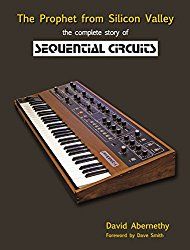
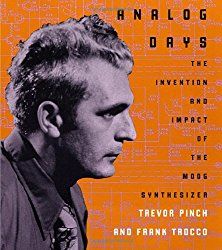
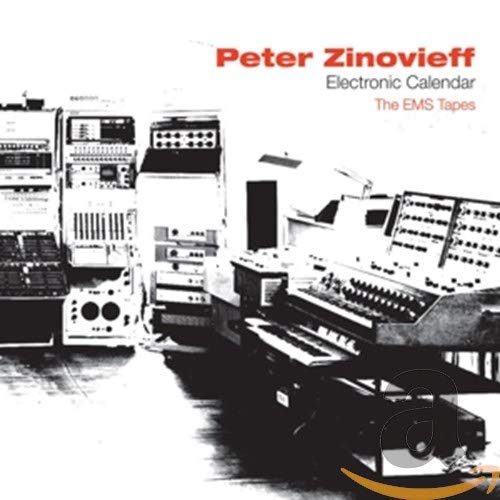
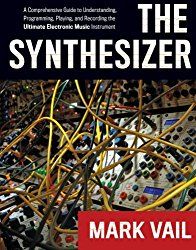
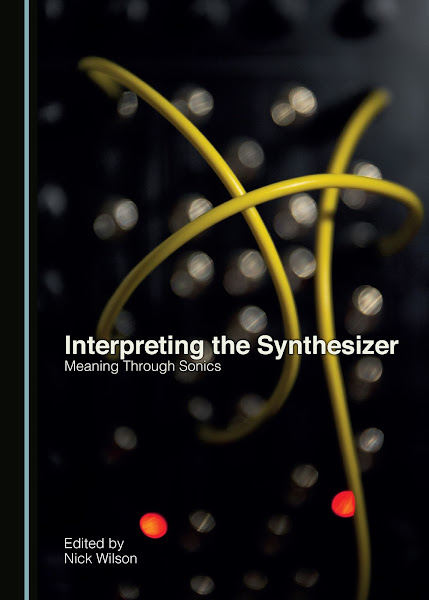
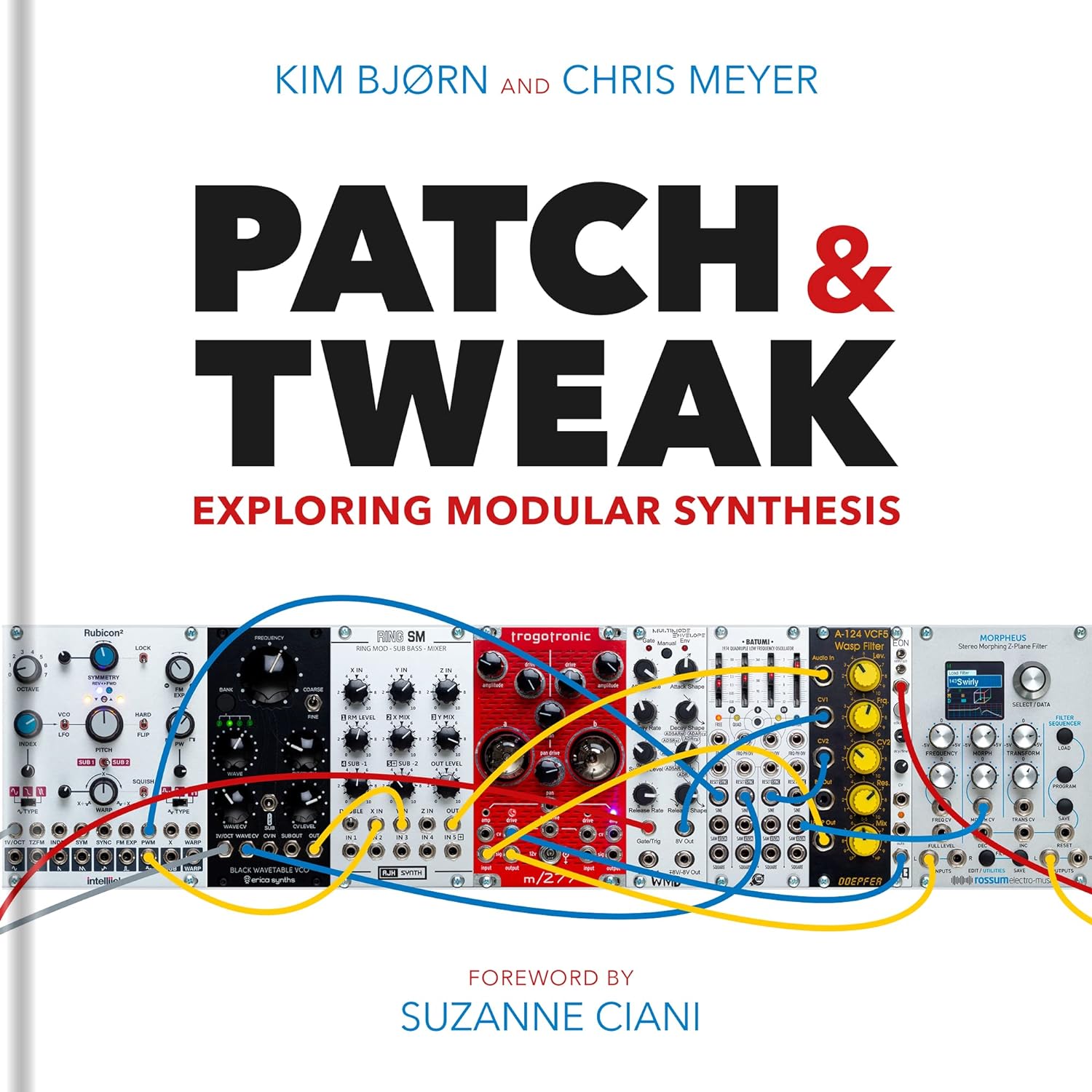

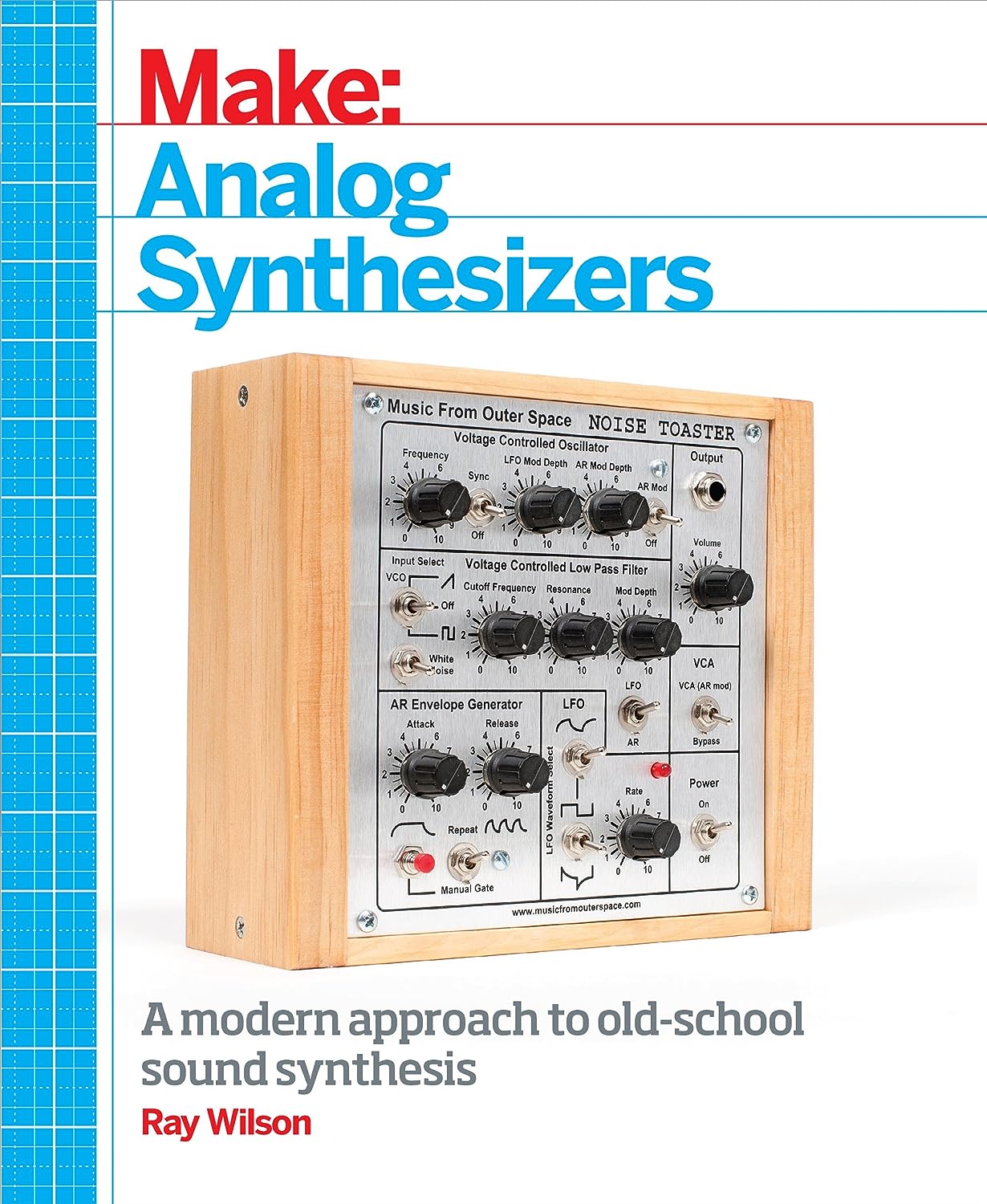
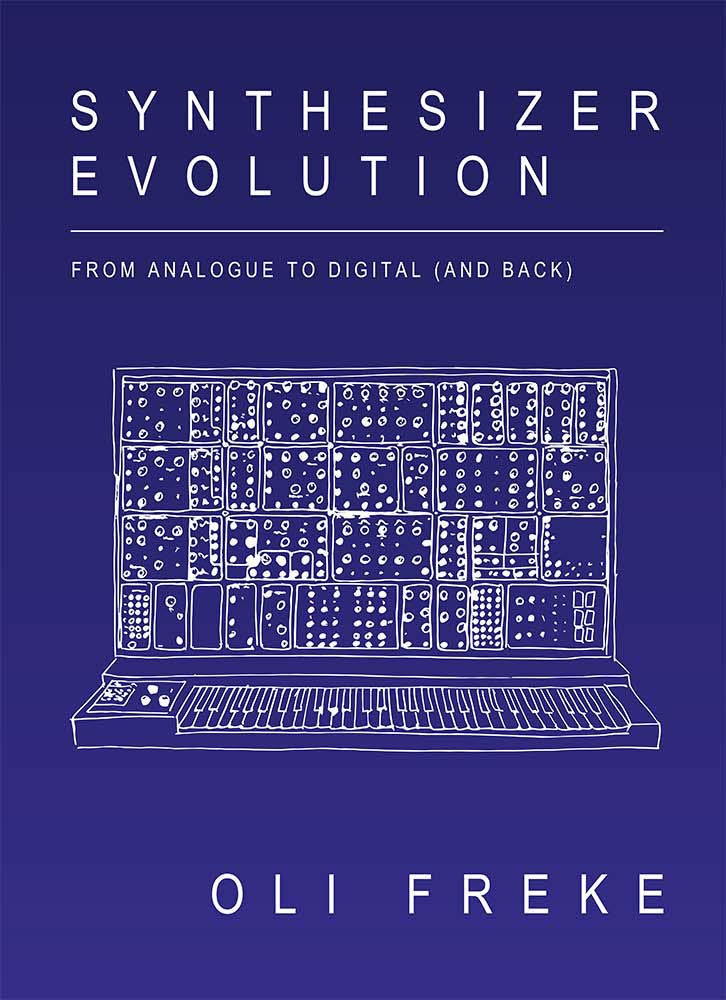
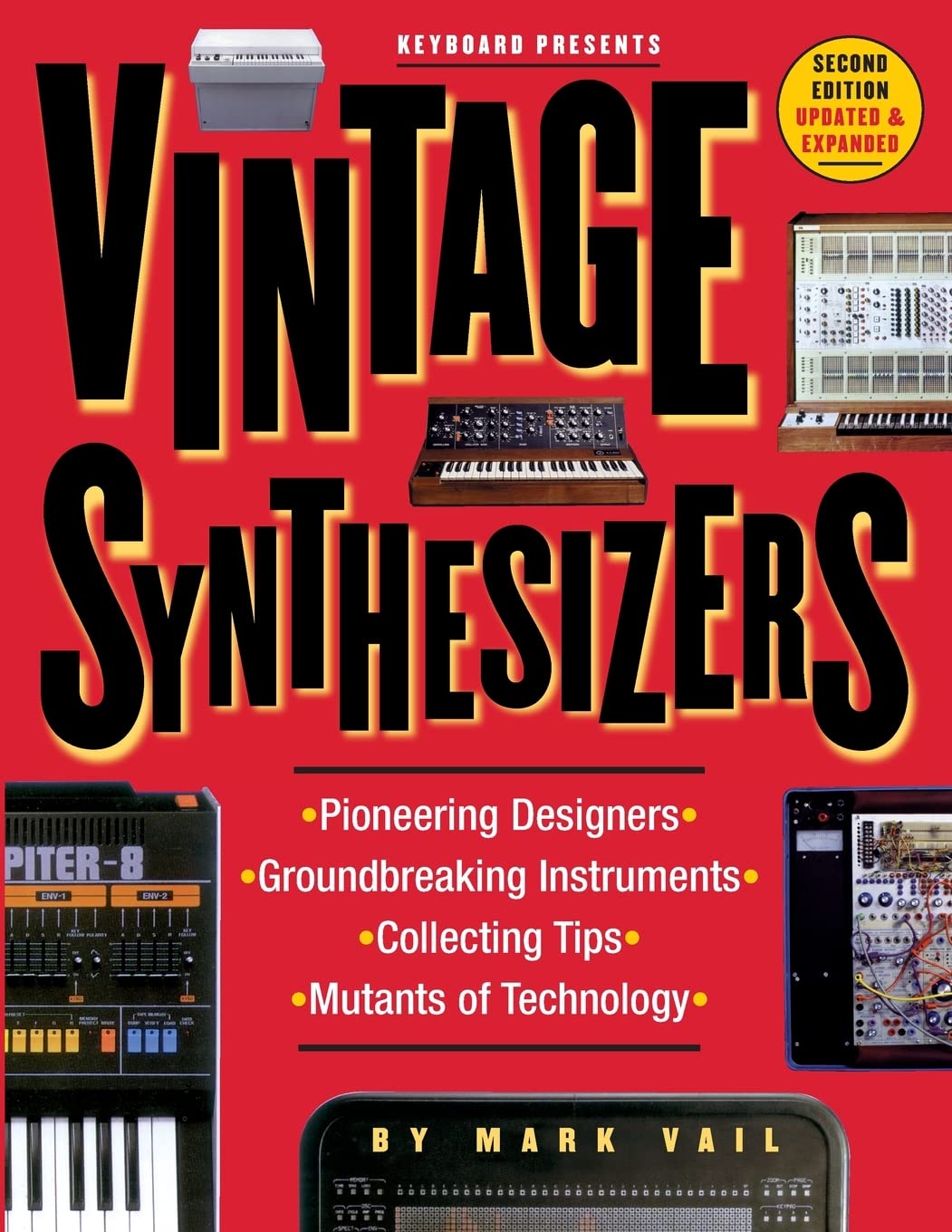
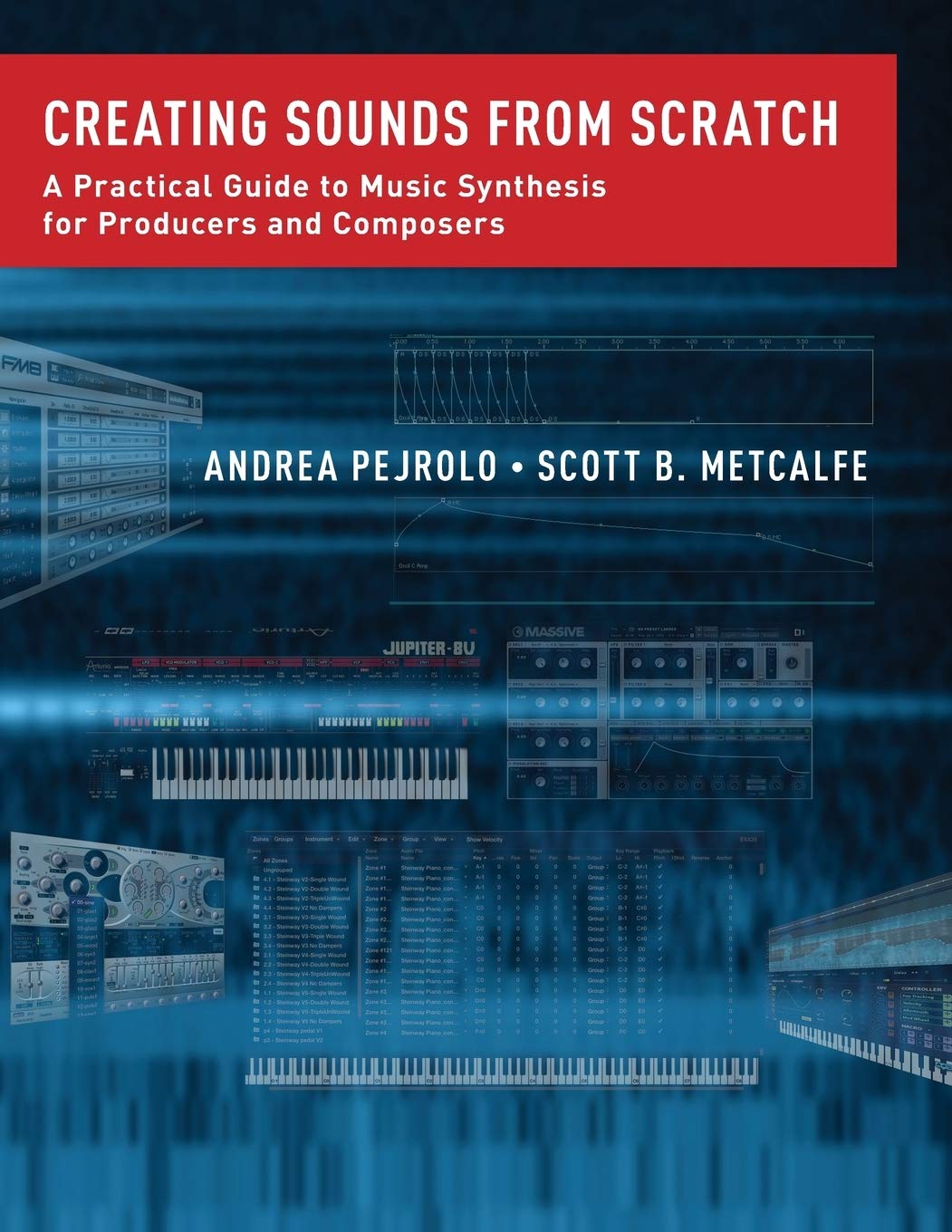
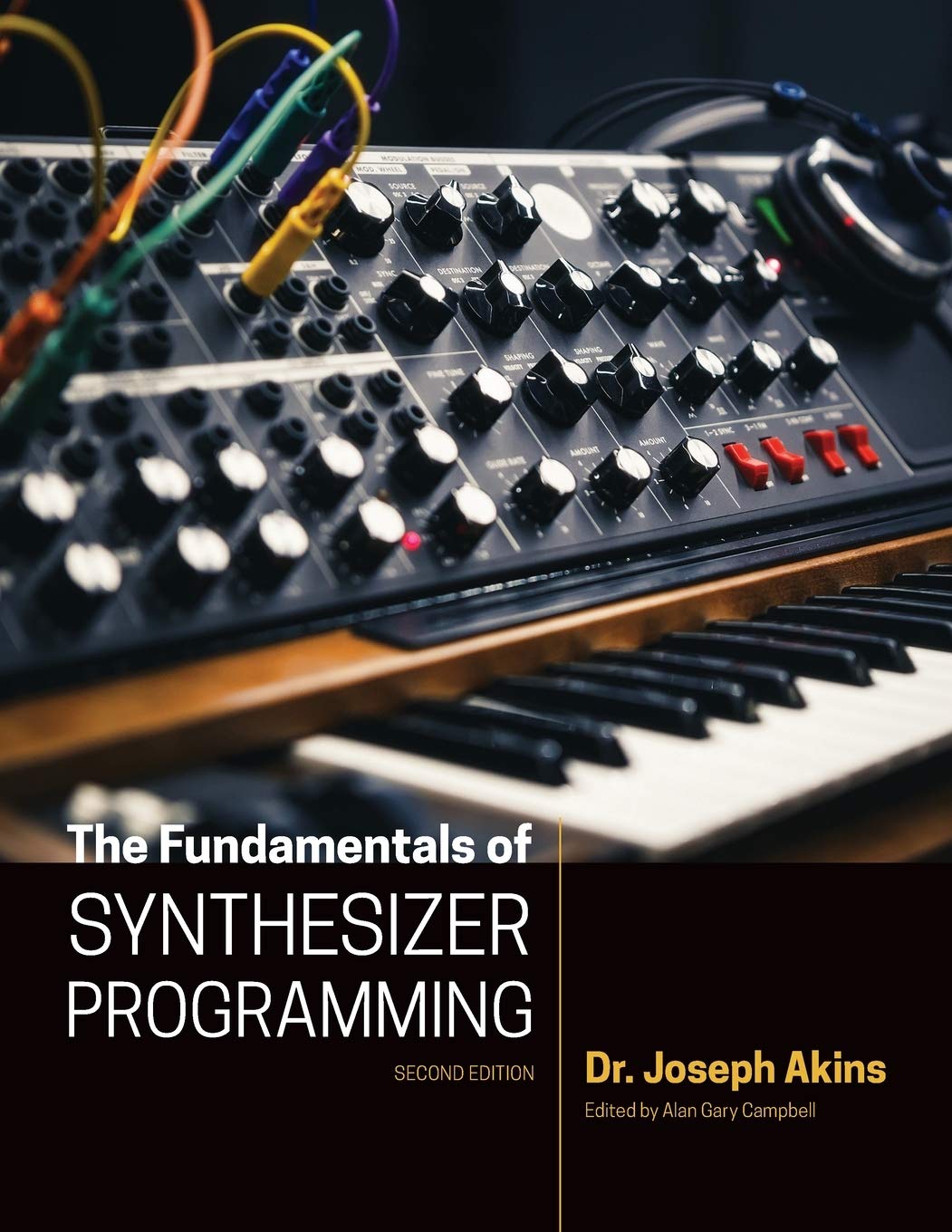

© Matrixsynth - All posts are presented here for informative, historical and educative purposes as applicable within fair use.
MATRIXSYNTH is supported by affiliate links that use cookies to track clickthroughs and sales. See the privacy policy for details.
MATRIXSYNTH - EVERYTHING SYNTH













© Matrixsynth - All posts are presented here for informative, historical and educative purposes as applicable within fair use.
MATRIXSYNTH is supported by affiliate links that use cookies to track clickthroughs and sales. See the privacy policy for details.
MATRIXSYNTH - EVERYTHING SYNTH

















